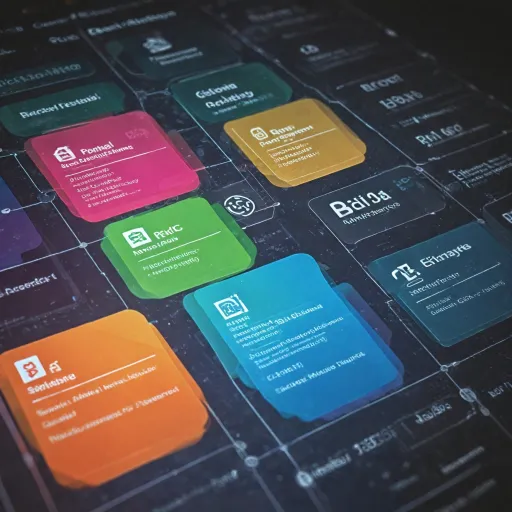
What is the intercontinental hotels group employee rate?
How the IHG Employee Rate Program Works
The InterContinental Hotels Group (IHG) employee rate is a special benefit designed for IHG employees, their family, and friends. This program allows eligible individuals to book rooms at participating hotels worldwide at a discounted rate. The goal is to make travel more accessible for employees and their close connections, while also strengthening loyalty to the IHG brand.
IHG employees can access these rates through the Merlin platform, which serves as the company’s internal portal. The Merlin manager or HR team typically provides guidance on how to use the system, including how to access benefits, check available hotels, and understand the terms and conditions of the rate program. The process is streamlined through the online mobile app or website, making it easy for employees to book rooms and manage their reservations.
- Employee rate: Discounted room prices for IHG employees, often lower than standard public rates
- Friends and family rates: Special discounts extended to employees’ close contacts, with some limitations on the number of rooms or nights
- IHG Rewards: Employees can earn points on eligible stays, which can be redeemed for future travel or other benefits
- Participating hotels: Not all IHG hotels offer the employee rate, so it’s important to check availability before booking
To take advantage of these benefits, employees must follow the program’s terms and conditions, which may include showing proof of employment or membership, booking through approved channels, and adhering to room benefit policies. The program is designed to reward loyalty, encourage travel, and support the well-being of IHG team members.
For those interested in how HR analytics can help organizations like IHG optimize such programs, you can explore a deep dive into human resources analytics for more context.
Key factors influencing employee rates in hospitality
Major Influences on Employee Rate Programs in Hospitality
Employee rates at hotel groups like IHG are shaped by a mix of internal policies and external market factors. Understanding these influences helps HR teams and managers create fair, competitive, and motivating programs for their workforce. Here are some of the most significant elements that impact employee rate offerings in the hospitality sector:
- Hotel Brand Standards and Program Structure: Each hotel group, including IHG, sets its own guidelines for employee rate programs. These standards define eligibility, the number of rooms an employee or their family and friends can book, and the types of rates available. The structure often includes benefits like employee discounts, access to the IHG Rewards program, and the ability to earn points on booked rooms.
- Employee Status and Tenure: The level of access to rate programs can depend on whether the employee is a full-time member, a club member, or a manager (such as through the Merlin manager portal). Tenure and job role may also influence the number of rooms or nights an employee can book at discounted rates.
- Participating Hotels and Room Availability: Not all hotels in a group participate in the employee rate program. Availability of employee rooms, family rates, and friends and family discounts can vary by location, season, and occupancy levels. This means employees need to check terms and conditions, often through online mobile apps or loyalty connect platforms, before booking.
- Market Demand and Seasonal Fluctuations: High demand periods, such as holidays or special events, can affect the availability of employee rates. Hotels may limit or adjust the program during peak times to balance guest revenue and employee benefit.
- Technology and Access: The ease of accessing benefits through mobile apps or online platforms like Merlin and loyalty connect plays a role in employee engagement with the program. Streamlined digital access encourages more employees to use their travel and room benefits.
- Compliance and Policy Updates: Regular updates to program terms and conditions, as well as compliance with local labor laws, ensure that employee rate programs remain fair and transparent. HR teams must communicate these changes clearly to all members.
For a broader understanding of employment types and how they relate to benefit eligibility, you can explore this guide to employment types. This context is crucial when analyzing who qualifies for IHG employee rates and related benefits.
These factors together create a dynamic environment for employee rate management. HR analytics can help monitor trends, identify gaps, and support data-driven decisions for optimizing these programs, as discussed in the next section.
Using HR analytics to monitor and improve employee rates
How HR analytics supports employee rate optimization
In the hospitality industry, especially within large groups like IHG, HR analytics plays a crucial role in understanding and managing employee rates. By leveraging data-driven insights, HR teams can make informed decisions about the employee rate program, which includes benefits such as discounted hotel rooms for employees, their family, and friends. These rates are often part of broader rewards and loyalty programs, designed to enhance employee satisfaction and retention.
Key data sources and metrics
To effectively monitor and improve employee rates, HR analytics teams typically gather data from several sources:
- Booking systems: Track the number of rooms booked by employees, family, and friends using special rates.
- IHG Merlin and mobile app: Monitor employee access to benefits, rate usage, and program participation across participating hotels.
- Loyalty programs: Analyze points earned, club member engagement, and the impact of employee travel on overall rewards.
- Employee feedback: Collect insights on satisfaction with the employee discount, room benefit, and terms and conditions of the rate program.
Analytical approaches for actionable insights
HR analytics teams use a mix of quantitative and qualitative methods to identify trends and areas for improvement. For example, they may:
- Compare employee rate usage across different hotels and regions to spot disparities.
- Assess the effectiveness of communication channels like the online mobile platform or loyalty connect in promoting the program.
- Evaluate the impact of the employee rate on retention, engagement, and overall satisfaction.
These insights help HR and hotel managers adjust the program, ensuring that benefits remain attractive and accessible to all eligible members.
Turning analytics into action
One of the most valuable aspects of HR analytics is its ability to drive continuous improvement. By regularly reviewing data on employee rates, IHG can refine program terms, expand access to more hotels, and enhance the overall employee experience. This proactive approach not only supports employee well-being but also strengthens the company’s reputation as an employer of choice in the hospitality sector.
For more on effective strategies in representative management and how analytics can support these efforts, visit effective strategies for representative management in HR analytics.
Common challenges in analyzing employee rates
Data Complexity and Consistency Issues
Analyzing employee rates within IHG hotels is challenging due to the sheer volume and diversity of data sources. Employee rate programs, such as the IHG employee room benefit or friends and family rates, are managed across multiple platforms like Merlin, the mobile app, and loyalty connect. Each participating hotel may interpret terms and conditions differently, leading to inconsistencies in how rates, discounts, and benefits are recorded. This makes it difficult to ensure data accuracy and comparability when monitoring rate usage, member benefits, and program compliance.Privacy and Compliance Concerns
Employee rate data often includes sensitive information about employees, their family, and friends. Ensuring compliance with privacy regulations and internal policies is essential. HR analytics teams must balance the need for detailed insights with the obligation to protect personal data. This is especially important when tracking who books rooms, how often employee travel benefits are used, and how club member or rewards points are earned through these programs.Tracking Program Utilization Across Hotels
IHG operates a large number of hotels worldwide, each with varying levels of participation in employee rate programs. Not all hotels offer the same rates or benefits, and some may have unique restrictions. This variation complicates efforts to analyze how widely the employee discount or family rates are used, and which hotels or regions see the most benefit from these programs. It can also impact the ability to measure the effectiveness of rate programs in supporting employee engagement and retention.Integrating Multiple Systems and Tools
Employee rate management often involves several systems: Merlin manager, the online mobile app, and loyalty connect, among others. Integrating data from these sources to get a unified view of employee rate usage, benefit access, and program performance is a technical challenge. Discrepancies between systems can lead to gaps in reporting, making it harder to track booked rooms, earned points, and overall program impact.- Ensuring all employee rate bookings are captured regardless of booking channel
- Reconciling differences in rate program terms across hotels
- Monitoring changes in employee status that affect rate eligibility
Interpreting Results for Actionable Insights
Even with robust data, drawing actionable conclusions can be difficult. For example, a spike in employee room bookings might reflect increased employee travel, a successful communication about benefits, or even misuse of the program. HR analytics professionals must carefully interpret trends, considering factors like seasonality, changes in program rules, and the number of active members. This requires a nuanced approach to ensure that analytics drive meaningful improvements in employee rate management and support the overall goals of the IHG rewards and benefits programs.Best practices for leveraging analytics in employee rate management
Building a Data-Driven Culture for Employee Rate Management
To effectively manage the IHG employee rate program, HR teams must foster a culture where data informs every decision. This means not only collecting data on employee rates, but also ensuring that hotel staff, managers, and HR professionals understand how to interpret and use this information. Training on analytics tools, such as Merlin or the IHG mobile app, helps employees and managers access benefits, track room bookings, and monitor rate usage across participating hotels.Ensuring Data Accuracy and Consistency
Accurate data is the foundation of reliable HR analytics. For the IHG employee rate and related benefits, it’s crucial to regularly audit data sources, such as loyalty connect platforms, online mobile systems, and rate program databases. This ensures that information about employee travel, friends and family rates, and club member benefits is up-to-date and consistent across all hotels. Clear documentation of terms and conditions for each rate program also helps avoid confusion among employees and HR teams.Segmenting and Personalizing Employee Benefits
Not all employees have the same travel needs or benefit preferences. By segmenting data—such as by hotel location, job role, or member status—HR can tailor communications and offers. For example, some employees may value earning points through IHG Rewards, while others prioritize the employee room benefit for family travel. Personalizing these benefits based on analytics increases engagement and satisfaction.Integrating Feedback Loops
Continuous improvement relies on feedback. HR analytics should include regular surveys and feedback mechanisms for employees using the rate program. This helps identify pain points, such as issues with booking a room or accessing discounts, and allows HR to adjust the program accordingly. Feedback from Merlin managers and club members can also highlight opportunities to enhance the employee discount experience.Monitoring Compliance and Program Utilization
To maximize the value of employee rates, HR must monitor both compliance with program rules and overall utilization. Tracking the number of booked rooms, usage of family rates, and adherence to terms and conditions helps ensure fairness and prevent misuse. Analytics dashboards can provide real-time insights into which hotels and members are most active, supporting data-driven decisions about program adjustments.- Encourage regular training on analytics tools for all hotel staff and managers
- Audit data sources to maintain accuracy in employee rate and benefit records
- Segment employee data to personalize benefits and communications
- Collect and act on feedback from employees and managers
- Use dashboards to monitor program compliance and utilization across hotels
Case study: applying analytics to address employee rate concerns
Real-World Impact of Data-Driven Employee Rate Management
Applying HR analytics to the Intercontinental Hotels Group (IHG) employee rate program reveals how data can drive meaningful improvements in both employee satisfaction and business outcomes. In the hospitality sector, where employee engagement and retention are closely tied to benefits like travel discounts, family and friends rates, and room benefits, analytics offer a clear path to optimization. One example comes from a group of participating hotels within IHG that noticed fluctuating usage of the employee room benefit. By collecting and analyzing data from the Merlin platform, mobile app bookings, and loyalty connect systems, HR teams identified patterns in how employees, club members, and their families accessed the rate program. They found that certain hotels had lower employee rate utilization, while others experienced high demand, especially during peak travel seasons. Key findings included:- Employees at hotels with clear communication about the terms and conditions of the rate program were more likely to book rooms and use their benefits.
- Hotels that promoted the IHG Rewards program and encouraged employees to earn points during their stays saw higher engagement and satisfaction scores.
- Some locations faced challenges with the number of rooms available at the discounted rate, leading to frustration among staff and their friends or family members.
- Standardized communication about the employee discount and family rates through the Merlin manager portal and online mobile channels.
- Adjusted the allocation of employee rate rooms at participating hotels based on historical booking data and projected demand.
- Enhanced the mobile app experience to make it easier for employees and their friends or family to access benefits and understand program rules.













